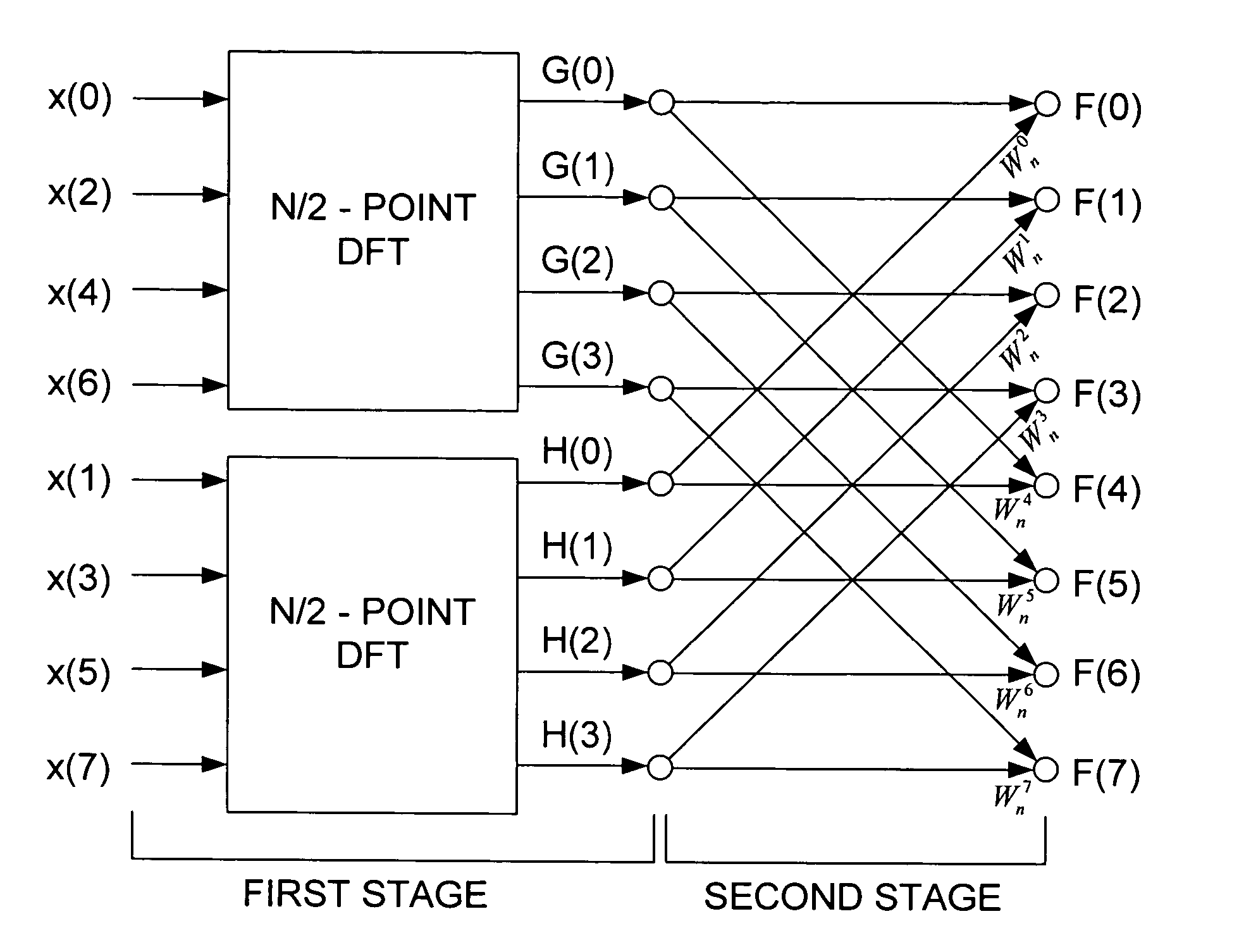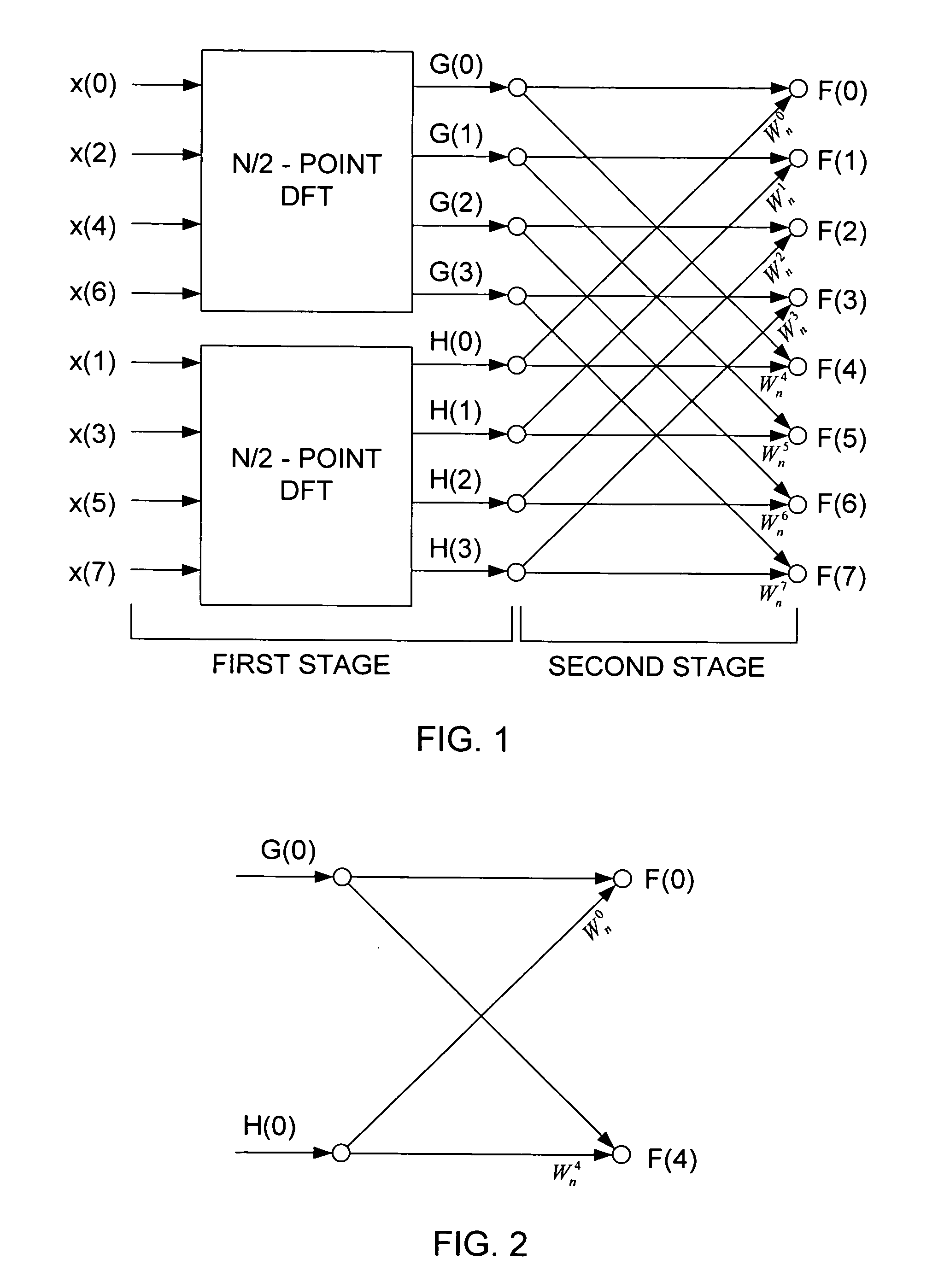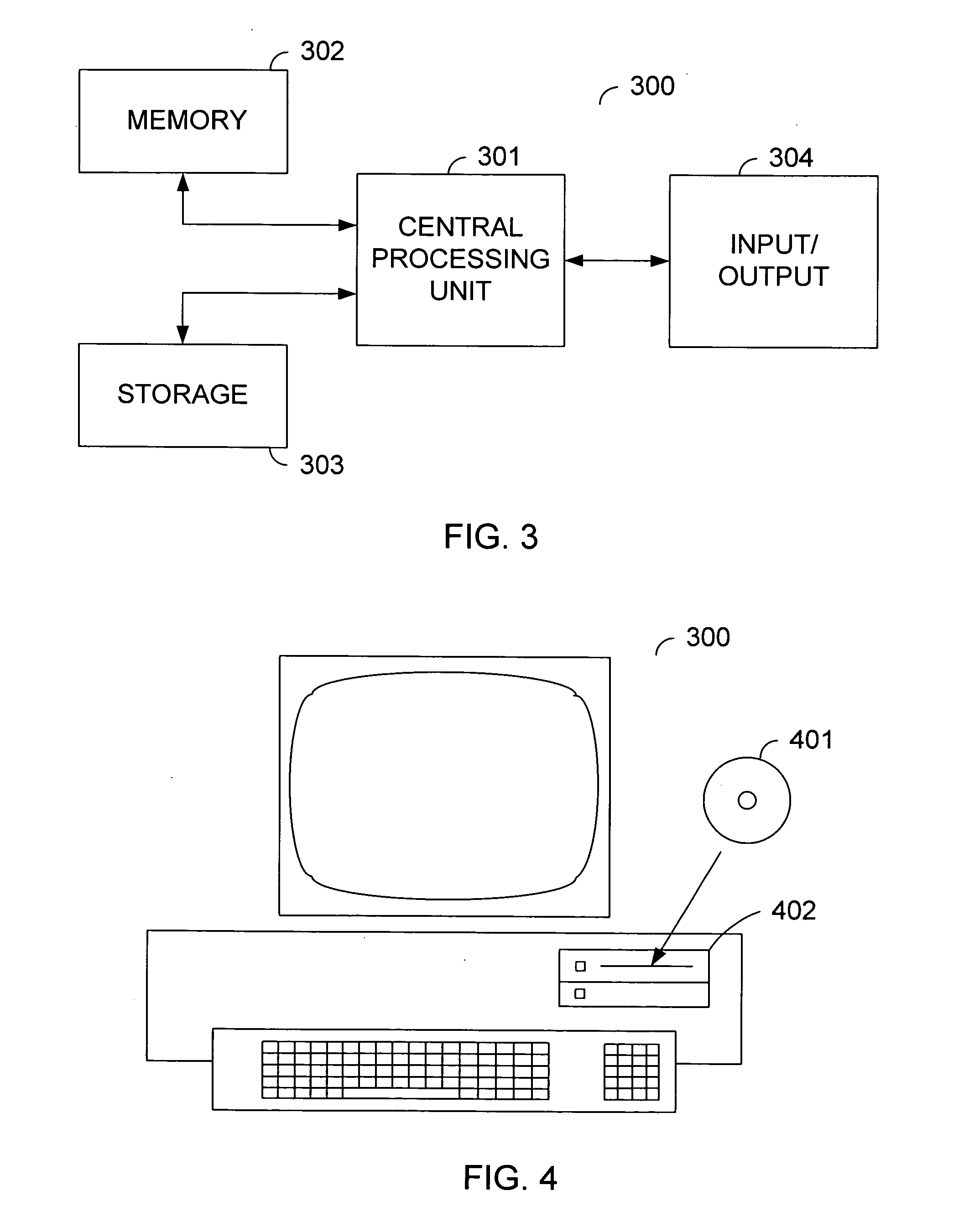Fast fourier transform method and apparatus
a fourier transform and fast technology, applied in the field of computation of discrete fourier transforms, can solve the problems of large number of operations and the time required for dft computation, significant redundancy in the computation of dft, and memory access time often a significant limitation on program performan
- Summary
- Abstract
- Description
- Claims
- Application Information
AI Technical Summary
Benefits of technology
Problems solved by technology
Method used
Image
Examples
Embodiment Construction
[0039] In a method in accordance with a first example embodiment of the invention, roots of unity that may have zero real parts are tested. If a root is found with a zero real part that would cause a division by zero in an FFT kernel incorporating Goedecker's optimization, a traditional kernel is executed instead of an optimized kernel for the FFT iteration that includes that root. Because relatively few kernel executions include roots of unity with zero real parts, the performance penalty resulting from the occasional execution of a slower traditional kernel is relatively small. For example, in computing a DFT of a sequence of length n=16,384 using the complete radix-4 FFT implementation of Listing 2, the kernel is executed 28,672 times (7 stages×16,384 / 4 4-point DFTs per stage), but only 1,365 of those kernel executions include a root of unity with a zero real part.
[0040] Furthermore, the increased computational overhead of testing the roots of unity for zero real parts is small ...
PUM
 Login to View More
Login to View More Abstract
Description
Claims
Application Information
 Login to View More
Login to View More - R&D
- Intellectual Property
- Life Sciences
- Materials
- Tech Scout
- Unparalleled Data Quality
- Higher Quality Content
- 60% Fewer Hallucinations
Browse by: Latest US Patents, China's latest patents, Technical Efficacy Thesaurus, Application Domain, Technology Topic, Popular Technical Reports.
© 2025 PatSnap. All rights reserved.Legal|Privacy policy|Modern Slavery Act Transparency Statement|Sitemap|About US| Contact US: help@patsnap.com



